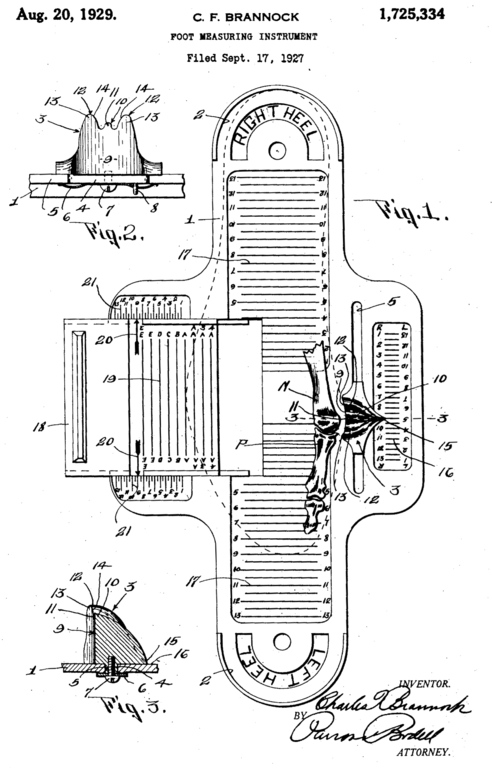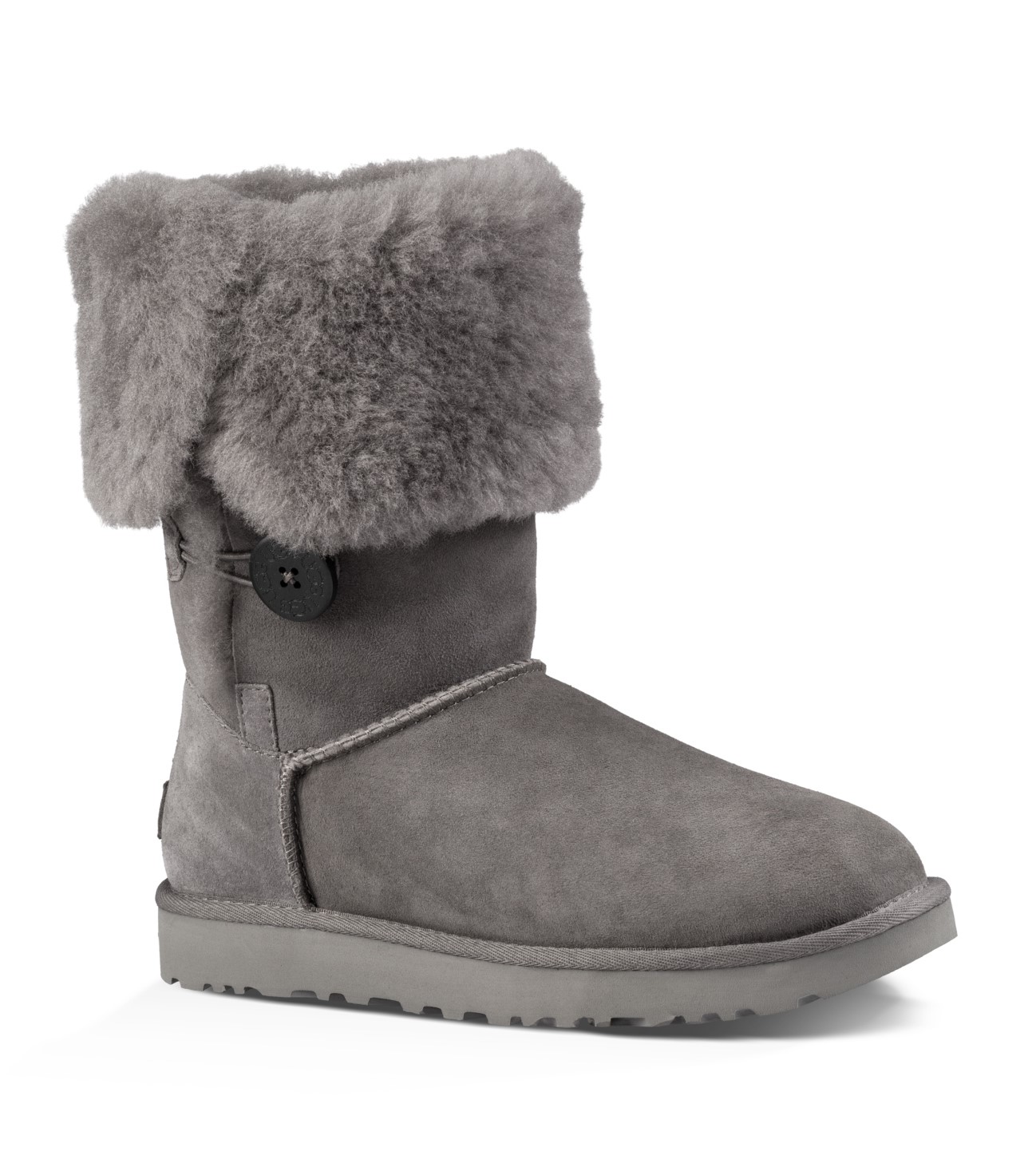
When someone asks, "What size shoes do you wear?" most
of us have a ready answer, a number (and possibly letter) that probably hasn't
changed since high school. Wearing shoes that fit correctly is extremely
important to foot health, but did you know that your shoe size can and does
change over time, even in adulthood? And, just like clothing sizes, different
brands can fit you in different ways no matter what number you see on the box.
So how do you find shoes that will fit your feet properly? The only way to be certain is to step into your local Englin's and have your foot measured by one of our shoe experts. You should do this more often than you think: at least once a year. As we age, our feet—which have borne the entire weight of our bodies all these years—naturally flatten out and spread. Even if your foot's length doesn't increase, the width often will. Other factors such as weight gain (including temporary weight gain during pregnancy) and foot issues (such as hammertoes and bunions) can affect the way your shoes fit.
In addition to having your feet measured frequently, you should also consult a podiatrist if you have foot health problems and take their advice on whether you need a change in shoe size or the addition of an arch support or orthotic. As always, the tips and advice in this blog are no replacement for the professional opinion of your physician.
WHAT IT'S LIKE TO HAVE YOUR FEET MEASURED

You should never have to settle for shoes that are tight, pinchy, and uncomfortable. It IS possible to get the right fit if you're willing to accept the help of our trained employees. Unfortunately, many people find the idea of letting a stranger near their feet uncomfortable at best. We're here to reassure you that our main concern is sending you home with shoes you love that love you back, and that means measuring to ensure a perfect fit. You can trust our staff to be helpful, respectful, and professional. Even if you have foot issues that you think are embarrassing, know that our fit experts have seen it all before and are more than happy to accommodate you.
Here's what to expect when you walk into one of our stores to get your feet measured: You'll take off your shoes and step onto a tool that is used for accurately measuring feet called a Brannock device. Typically, you'll remain standing with your feet in a normal, comfortable position, nestling your heel against the heel cup of the device. (You might be surprised when both feet are measured, but having one foot that is longer than the other is more common than you might think. If you have two differently-sized feet, it's always best to wear shoes that fit the larger foot.)
The employee will use the Brannock device to take a precise measurement of your foot's heel-to-toe length, arch (heel-to-ball) length, and width, thus ensuring the absolute best fit possible. Both lengths will be taken into account when deciding on your shoe size, but typically, the one that equates to the larger shoe size will be the one that is used. So if, for example, your heel-to-toe length says you need a size 9, but your arch length says you need a 9.5, you'll want shoes in size 9.5. The employee will use the final shoe size in conjunction with the device's width bar to determine your shoe width.
That's all there is to it! Of course, having your feet measured with a Brannock device is just the first step to finding that perfect fit. Because of variations in different brands, your size as established by the device may not be accurate for every single pair of shoes you try. However, it's a great starting point, and our employees will be best able to serve you with that information.
FINDING YOUR FIT
Once you've had your feet measured, the next step is to try on some shoes. If you're buying shoes online and haven't had your feet measured, these tips will help you decide whether the shoes you purchased are the correct size or not. Unless you're familiar with a brand's sizing and confident that you know your size, it's often a good idea to purchase two pairs of shoes (typically one in the size you think you are and one a half-size larger) when buying online. With Englin's Fine Footwear's free shipping and returns policy, which applies to all orders that total $50 or more, you can purchase multiple pairs of shoes to try without any added cost or inconvenience.
Here are some tips from our fit experts:
- At the heel, your shoe should fit snugly without slipping. The midfoot should also be snug, both below your arch and over the top of your foot, but not tight.
- The toe box should give you room to wiggle your toes. When you're standing, there should be ⅜" to ½", or about the width of your finger, between the end of your longest toe (usually the second toe or big toe) and the end of the shoe.
- Keep in mind that even though it's not measured by a Brannock device, the height of your instep can have an effect on fit. If a shoe in your Brannock-determined size feels tight across the top of your foot, it may be because you have a thick foot or high instep. Try the next size or half-size larger.
- Always try on both shoes, just in case one of your feet is longer than the other. Again, always choose shoes that fit your larger foot.
- It's best to try on shoes (and have your feet measured, for that matter) towards the end of the day. Your feet will swell and settle a bit throughout your day, and you want shoes that will fit your feet comfortably at their biggest.
- When trying on shoes, make sure you're wearing the type of socks you'll typically pair with those shoes. The thickness of your socks can actually make a difference in whether or not your shoes are comfortable.
- People are more than twice as likely to buy a shoe that is too small than one that is too big. Your shoes might be too small or narrow if you experience foot cramping or "falling asleep" or the formation of blisters and calluses between or on your toes.
- If the shoe you want is not available in a large enough width, try the next size up. As shoes increase in length, they typically increase slightly in width to accommodate an all-over larger foot.
- Don't assume that a tight shoe will stretch out over time. Always purchase shoes that fit properly from the moment you first put them on. While some shoes will become less rigid once they're "broken in," they typically won't truly stretch. One significant exception is UGG boots (or other shoes and boots with thick fur or sheepskin linings), which should feel snug at first. The lining and insole will mold to your foot's shape over time.
SIZING BY BRAND
As we mentioned, some brands fit a bit differently than others, either because of the materials from which their shoes are made or because of their unique sizing standards. Here are some notable examples:
- Birkenstock. Birkenstock shoes are available only in regular and narrow widths—however, if you typically wear a wide shoe, regular-width Birkenstocks will likely fit you. Birkenstocks run wide in order to accommodate your foot's natural spread, which is also encouraged by their cork-and-latex footbeds. For more about how to find the best Birkenstock fit, check out our Birkenstock Footbed FAQ.
- UGG. As explained above, UGG's sheepskin boots and shoes will feel snug on your foot at first. As the sheepskin breaks down and molds around your foot, they will become looser. Generally, you'll want to purchase UGG boots that are a half size or full size smaller than your usual size.
- Dansko clogs. Dansko professional clogs—also known as nursing shoes—may feel strange if you've never worn them before. These clogs are actually designed to move up and down freely at the heel, so there should be some space between the back of the shoe and the back of your foot. Many first-time Dansko wearers may think that their clogs are too big, but once you get used to the feeling, they're amazingly comfortable. Like all shoes, Dansko clogs should be supportive at the arch and roomy in the toe box.
- Munro. While Munro women's shoes are typically true to size, this brand is noteworthy for offering extended sizes and widths. Munro offers a whopping 75 size and width combinations. Some of our most popular Munro styles are offered in every size from 4-14 and in 5 different widths (SS, N, M, W, WW). To learn more about Munro, read our Brand Spotlight: Munro blog.

Munro's 75 size and width combinations.
If you have any further questions about how to get the best fitting shoes, stop by your nearest Englin's location or give our friendly customer service team a call. Don't underestimate the importance of a great fit! Not only will your feet be more comfortable, they'll be healthier, too!

